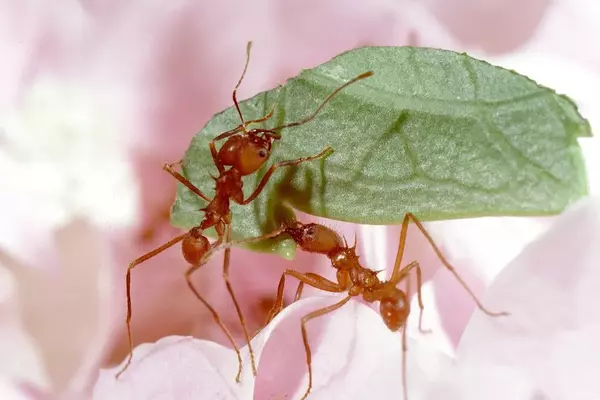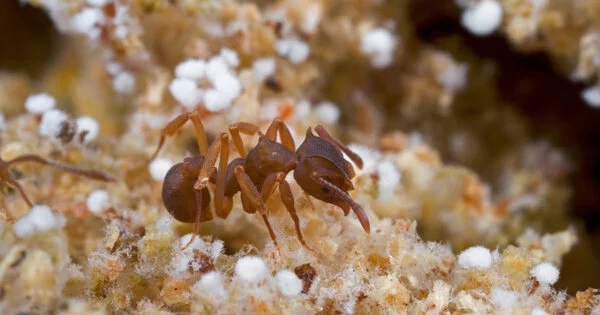Fungus-farming ants have formed an intriguing mutualistic relationship with the fungus that serves as their primary food source.
The key to a productive garden is to weed early and often. Interestingly, certain ant species are also avid gardeners, a skill they’ve honed over 50 million years. They, too, weed their underground fungus gardens, but it’s unclear how they know what to weed out. A multidisciplinary team of scientists has now reported in PNAS on June 15 how ants distinguish between good and bad fungus.
People rely on sight to identify weeds, but because ants grow fungus underground in the dark, they must have other means of detecting undesirable garden denizens. The ants sniff out diseased fungus by detecting chemicals called peptaibols, according to a team led by Jonathan Klassen, Ph.D., of the University of Connecticut and Marcy Balunas, Ph.D., of the University of Michigan.
The researchers focused on the ant Trachymyrmex septentrionalis, whose habitat spans the pine barren ecosystem from Long Island to East Texas. Trachymyrmex ants cultivate their fungus underground and feed it fresh organic detritus. The fungus functions almost as an external gut for the ant colony; it grows up and around the fresh food laid on top of it in honeycomb shapes, produces digested food for the ants as it grows, and then secretes waste.
We were curious to see if the ants were weeding because of compounds produced by the infecting fungus. This suite of Trichoderma compounds inducing ant behaviour is in contrast to many other natural products whose activity can often be attributed to one compound.
Marcy Balunas
Katie Kyle, a Klassen Lab graduate student and co-first author on the paper, found that when ant nests were infected with Trichoderma, a naturally occurring, disease-causing fungus that infects the ants’ gardens, the ants began working overtime to remove the infection from the nests, increasing their waste output. During the winter, when the ants were dormant, the researchers examined the fungal biomes of several different ant nests collected from various locations and discovered Trichoderma in all of them.
Sara Puckett, Ph.D., a recent graduate from the Balunas’ UConn lab, prepared extracts of Trichoderma containing the fungus’ organic compounds to determine whether the weeding was triggered by one or more of these compounds or simply by the presence of the pathogen’s cells.
“We were curious to see if the ants were weeding because of compounds produced by the infecting fungus,” Balunas said.

When the Trichoderma extract was applied to the fungus garden, the ants went into a frenzy of weeding, just as actual Trichoderma infections had. They discovered the nests contained peptaibols, a family of compounds known to be produced by Trichoderma in collaboration with scientists from the University of California, San Diego and the University of North Carolina, Greensboro. However, because these extracts contained so many different compounds, determining which specific peptaibols were causing ant weeding proved more difficult.
The researchers tested pure peptaibols, including two new compounds called trichokindins VIII and IX. It turns out that all the peptaibols tested caused some level of ant weeding, a finding that implies it may not be one particular peptaibol but rather that the whole suite of peptaibols can induce the ants to weed their garden.
“This suite of Trichoderma compounds inducing ant behaviour is in contrast to many other natural products whose activity can often be attributed to one compound,” Balunas says.
Although their data support peptaibols as a weed signal, it is unclear what the ants are perceiving. The researchers speculate that the peptaibols are produced by the invading Trichoderma fungus, which the ants detect and then weed. Perhaps the ants are picking up on a secondary response from the fungus garden.
Klassen says the next step is to figure out the specifics of ant-fungus communication. “Perhaps the fungus is saying, ‘I’m sick.'” Perhaps the fungus is detecting peptaibols. “We need to flesh out the signalling chain,” Klassen says.
The findings highlight one of the few known systems in which an animal responds to a disease of its beneficial symbiotic partner rather than a disease of its own body, a phenomenon known as an extended defence response that Balunas and Klassen hope to further investigate.
















